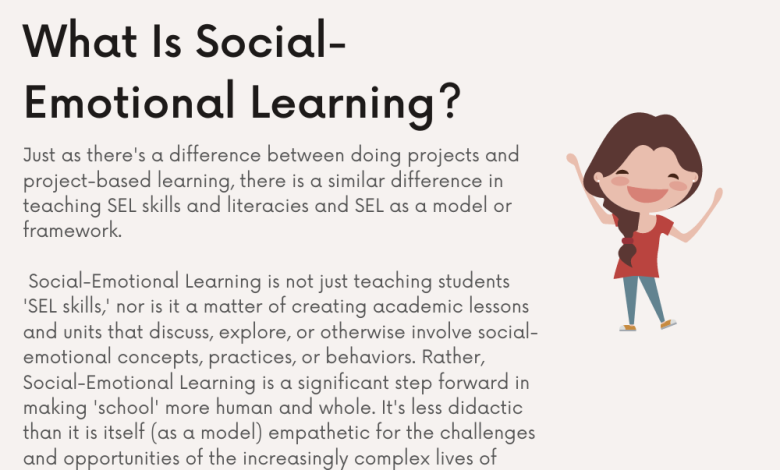Why You Shouldn’t Use Physical Education As Punishment

contributed by Dr. Kymm Ballard, Executive Director for SPARK
Think about any time you’ve seen “army boot camp” portrayed in pop culture — are you picturing the traditional drill sergeant, ordering his troops to do endless laps and push-ups, as punishment for their errors that day?
Now, with that scenario in your mind, imagine it being played out by children and teenagers at school — and instead of drill sergeants, their teachers are at the helm. Believe it or not, it’s actually quite common in certain areas of the country for teachers to have students do physical activities as punishment for misbehaving.
While this may have been perceived decades ago as a way to ‘toughen kids up,’ it’s a trend that ought to be falling out of favor by now – particularly when children today are already less likely to be active than generations before them.
If you’re a teacher yourself, you know how impressionable students can be. Reinforcing the idea that exercise equals punishment promotes negative feelings towards physical activity.
See also Dos and Don’ts Of Elementary School Classroom Management
The Problem with Physical Punishment
While some feel that running a few laps as punishment sounds reasonable, this can have an adverse effect on a child’s psyche that lasts for decades. Researchers have found that PE teachers and coaches think physical punishment is an effective way to show students that there are consequences to their actions; they’re not wrong, and in fact, that’s exactly the problem. Physical punishment happens to work a little too well.
When we demand physical activlity to punish misconduct, the message we’re sending — loud and clear — is that physical exercise is a terribly unpleasant activity, and something we all should try to avoid. And, our children are certainly hearing it. At a time when not enough children (or adults, for that matter) are getting the recommended amount of daily exercise, the last thing we should do is reinforce the idea that physical activity is something to dread. If kids are already trying to find reasons to be less active, viewing exercise as a punishment is all the more reason not to do it.
This mentality can carry over into adulthood as well, leading to an aversion towards physical exercise for the rest of one’s life – naturally pushing a person in the direction of inactivity, obesity, and other health problems. The goal of any physical educator should be to teach students that exercise is a positive and productive way to spend time, rather than something to rebel against.
To add to the pile of psychological and physical health repercussions of this trend, there’s even more serious reason not to use physical education as punishment: it could be illegal in your state.
That’s right. It’s actually against the law in 29 states – deemed a form of corporal punishment. The National Association for Sport and Physical Education (NASPE) states that “Administering or withholding physical activity as a form of punishment and/or behavior management is an inappropriate practice.”
So while your school’s PE teacher or team coach may think it’s perfectly fine to have students run drills as a disciplinary measure, it might be breaking the law – and acting against the best interest of the students.
Better Alternatives for Student Discipline
Teachers and coaches often struggle to find methods for disciplining students that are both appropriate and effective. This may account for why some still prefer to go the route of physical education as punishment; it’s easy to dole out, it’s over fairly quickly, and a heavy workout can wear a student out by exhausting them. For the sake of the children and their future physical health habits (not to mention the law), teachers and coaches should avoid the easy route, and strive to find more appropriate ways to discipline the class troublemakers.
On the flip side of this trend, some teachers go in the opposite direction, banning misbehaving students from participating in recess; in fact, 77% of teachers prevent children from taking part in recess in order to diminish bad behavior. Unfortunately, this extreme isn’t ideal, either.
Taking away children’s outlets for exercise can also skew their perception of activity and participation. Although the presumption is that children will learn that getting exercise is a privilege (the opposite of using it as punishment), it also eliminates their daily chance to interact socially and physically at school. Researchers have found that recess acts a “reset button” for students’ cognitive function, so removing it (for any reason, good or bad) can actually set students up for failure the rest of the day.
Instead, look into disciplinary tactics that don’t involve the threat of overexertion, or forced physicality. Children, especially in their formative years, need to be able to develop their own boundaries when it comes to their own comfort with physical activity. Though it’s good to keep them moving – which is why banning recess is a bad idea – pushing them into exercise under negative circumstances leaves a lasting impression. The important thing should be to promote physical activity (through phys ed classes, recess, and so on) as a fun and positive way to spend time.
If you’re facing ongoing issues with a student and you’re at a loss, talk to your school administrators to see what they advise as appropriate punishment. Disciplinary tactics may include calling a meeting with the student’s parents, or assigning detention. While there can be some argument for banning a student from participating in sport, it can be looked at as a last measure to try to curb negative behavior.
Make Exercise Fun, not Fearful
Physical education teachers and coaches know, better than anyone, the importance of physical activity for a long and healthy life. They’ve devoted their careers to instilling healthy values in children, and inspiring positive associations with exercise. They may not realize that sometimes, their attempts at discipline are acting against those very values.
Forcing students to run laps or do push-ups as penance for bad behavior has long-ranging effects that may turn them away from physical activity altogether. Even just threatening to add extra sit ups, jumping jacks, and drills — whether you act on it or not — promotes an unhealthy aversion towards exercise, as a weapon that can be used as a threat.
Keep the focus on activity as a positive and fun pastime, rather than something to be feared — it’ll go a long way towards fostering a lifelong love of movement.
4 Dos and Don’t For Physical Education In The Classroom
Here are four dos and four don’ts for incorporating physical education into the classroom:
Dos
- Do integrate short physical activities: Incorporate brief movement breaks or exercises between lessons to help students stay focused and energized.
- Do promote inclusivity: Ensure all students, regardless of physical ability, can participate in physical activities by offering modified exercises or alternative options.
- Do link physical activities to academic content: Use movement-based activities to reinforce learning, such as using physical games to practice math or spelling.
- Do encourage teamwork and cooperation: Design activities that promote collaboration and communication among students, fostering social skills and a sense of community.
Don’ts
- Don’t use physical activity as a punishment: Avoid making students do physical exercises as a consequence for misbehavior, as it can create negative associations with physical activity.
- Don’t focus solely on competition: While competitive games can be fun, ensure they are balanced with non-competitive activities to avoid alienating students who may not excel in sports.
- Don’t neglect safety: Always prioritize safety by providing clear instructions, ensuring the physical space is free of hazards, and supervising activities closely.
- Don’t disregard individual differences: Recognize that students have different fitness levels and abilities, and avoid pushing students beyond their limits or comparing them to one another.
Dr. Kymm Ballard is the Executive Director for SPARK, a division of School Specialty, Inc. Kymm is the former Physical Education, Athletics and Sports Medicine Consultant with the North Carolina Department of Public Instruction. Her professional experiences include service for more than a decade as a physical education teacher, several years as an administrator and the co-developer of North Carolina’s first high school demonstration school. Kymm’s direct service to children influences her work at the national level today. She wrote, advocated for and promoted the Healthy Active Children Policy of the NC State Board of Education and the state’s Standards for Physical Education




